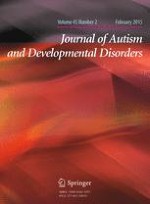01-02-2015 | Original Paper
Joint Analysis of Band-Specific Functional Connectivity and Signal Complexity in Autism
Gepubliceerd in: Journal of Autism and Developmental Disorders | Uitgave 2/2015
Log in om toegang te krijgenAbstract
Examination of resting state brain activity using electrophysiological measures like complexity as well as functional connectivity is of growing interest in the study of autism spectrum disorders (ASD). The present paper jointly examined complexity and connectivity to obtain a more detailed characterization of resting state brain activity in ASD. Multi-scale entropy was computed to quantify the signal complexity, and synchronization likelihood was used to evaluate functional connectivity (FC), with node strength values providing a sensor-level measure of connectivity to facilitate comparisons with complexity. Sensor level analysis of complexity and connectivity was performed at different frequency bands computed from resting state MEG from 26 children with ASD and 22 typically developing controls (TD). Analyses revealed band-specific group differences in each measure that agreed with other functional studies in fMRI and EEG: higher complexity in TD than ASD, in frontal regions in the delta band and occipital-parietal regions in the alpha band, and lower complexity in TD than in ASD in delta (parietal regions), theta (central and temporal regions) and gamma (frontal-central boundary regions); increased short-range connectivity in ASD in the frontal lobe in the delta band and long-range connectivity in the temporal, parietal and occipital lobes in the alpha band. Finally, and perhaps most strikingly, group differences between ASD and TD in complexity and FC appear spatially complementary, such that where FC was elevated in ASD, complexity was reduced (and vice versa). The correlation of regional average complexity and connectivity node strength with symptom severity scores of ASD subjects supported the overall complementarity (with opposing sign) of connectivity and complexity measures, pointing to either diminished connectivity leading to elevated entropy due to poor inhibitory regulation or chaotic signals prohibiting effective measure of connectivity.
